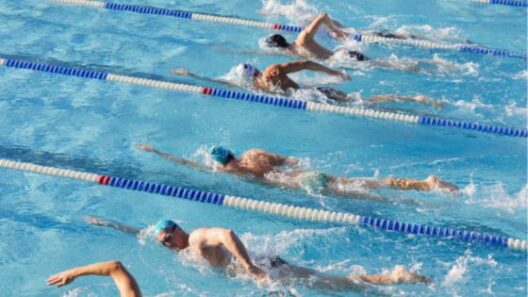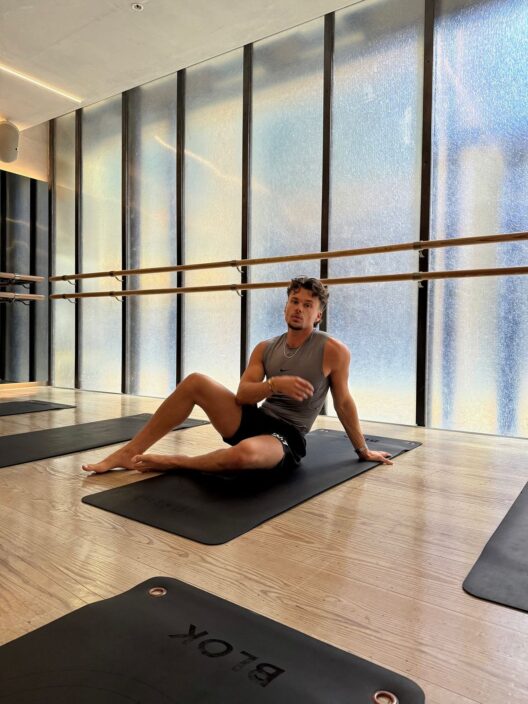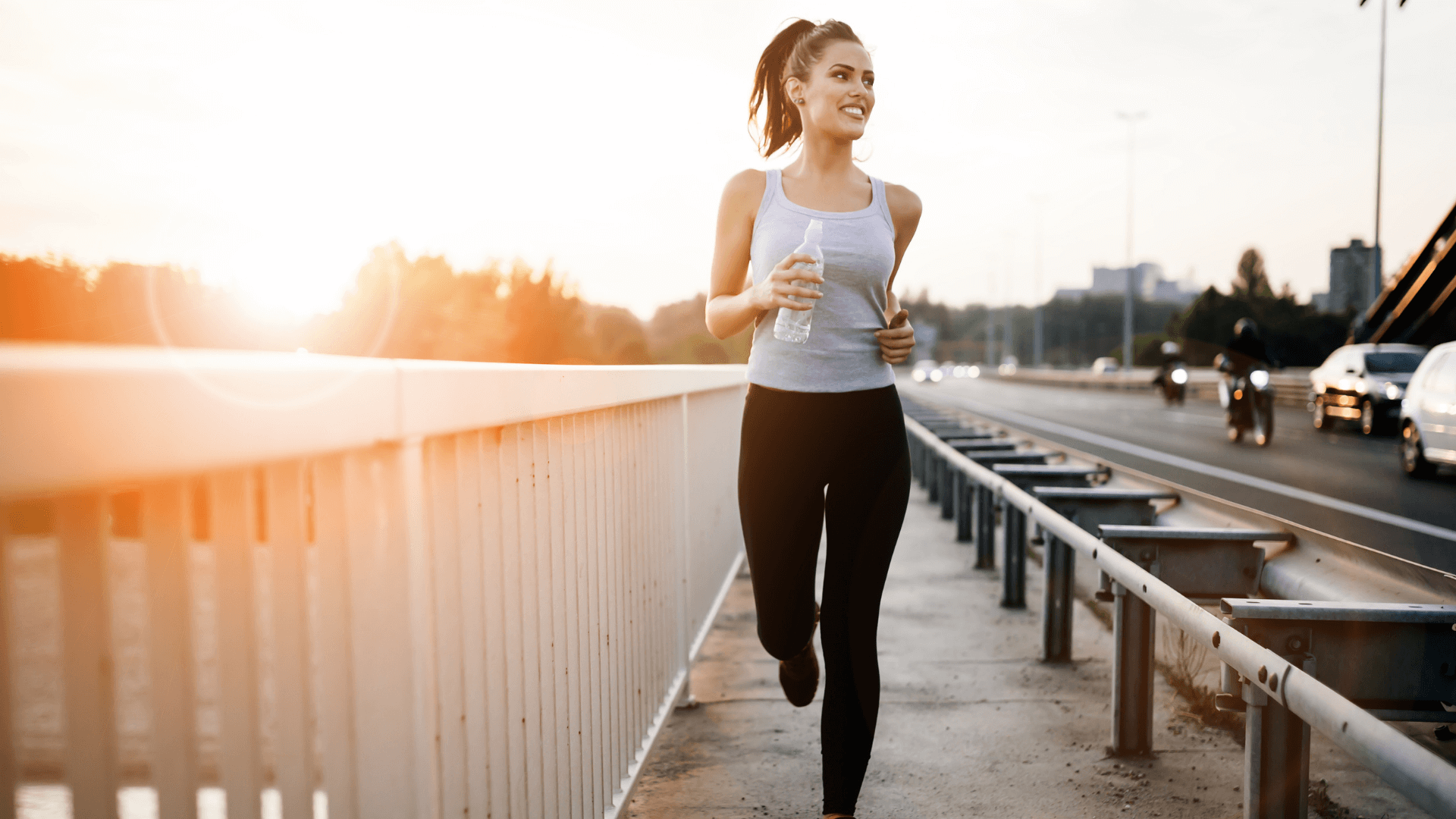The journey to peak physical fitness often involves pushing your muscles to their limit, which inevitably leads to delayed onset muscle soreness (DOMS). To combat this post-workout discomfort, athletes and fitness enthusiasts have long turned to two primary therapeutic extremes: the icy shock of a cold plunge and the intense heat of a sauna.
This guide breaks down the science, benefits, and drawbacks of both ice baths and saunas to help you decide which is the better recovery tool for your personal fitness goals.
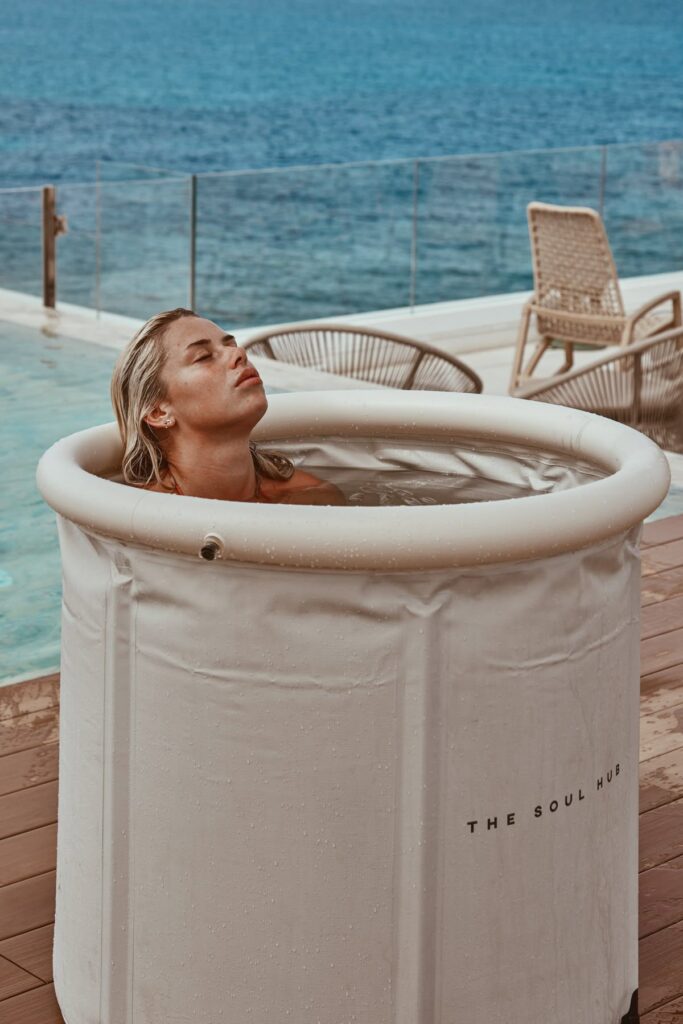
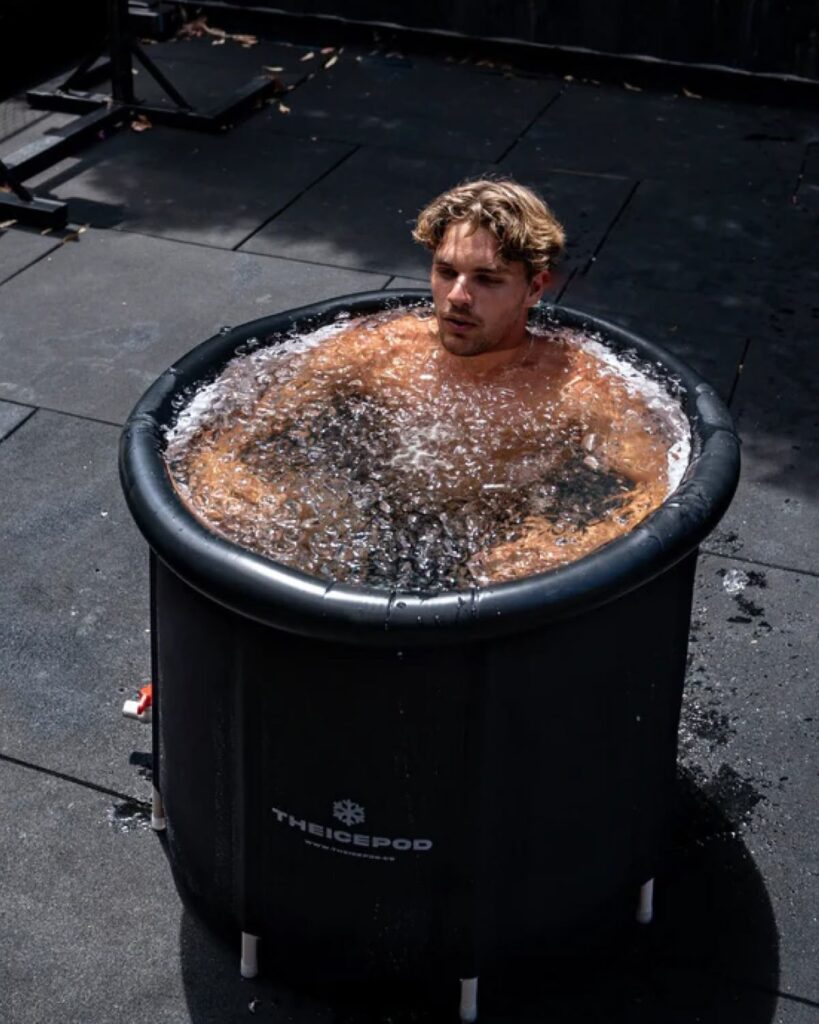
Part 1: The Cold Corner – Ice Baths (Cold Water Immersion)
Ice baths typically involve immersing the body in water below 15∘C (59∘F) for a short duration, usually 10-15 minutes. This form of cryotherapy is a go-to for many dealing with acute pain and swelling.
How Ice Baths Aid Recovery
- Reduced Inflammation (Vasoconstriction): The intense cold causes blood vessels to constrict (vasoconstriction). This immediate response slows blood flow to the muscles, which in turn reduces metabolic activity and minimizes swelling and inflammation often associated with microscopic muscle tears from intense exercise.
- Pain Relief: The cold temperature acts as a local anesthetic, numbing nerve endings and slowing nerve signaling, which can immediately ease muscle pain and soreness.
- The “Flush” Effect: Upon exiting the bath, the rapid rewarming of the body causes blood vessels to quickly dilate (vasodilation). This rush of oxygenated blood is thought to help “flush” metabolic waste products, like lactic acid, out of the muscles.
Key Benefits for Muscle Soreness
- Effective for Acute Inflammation: Best used immediately after a high-intensity or contact workout to mitigate the initial inflammatory response.
- Significant Reduction in Perceived Soreness (DOMS): Research consistently shows ice baths are one of the most powerful techniques for significantly reducing the subjective feeling of post-exercise muscle soreness.
- Mental Resilience: The shock of the cold is a mental test that can improve focus, mood, and build tolerance to stress.
Potential Drawbacks
- Muscle Growth Inhibition: Some studies suggest that the chronic use of ice baths immediately post-strength training may blunt the necessary inflammatory signals required for optimal long-term muscle hypertrophy (growth) and strength adaptation.
- Discomfort: The cold can be intense and uncomfortable, making adherence difficult for some.
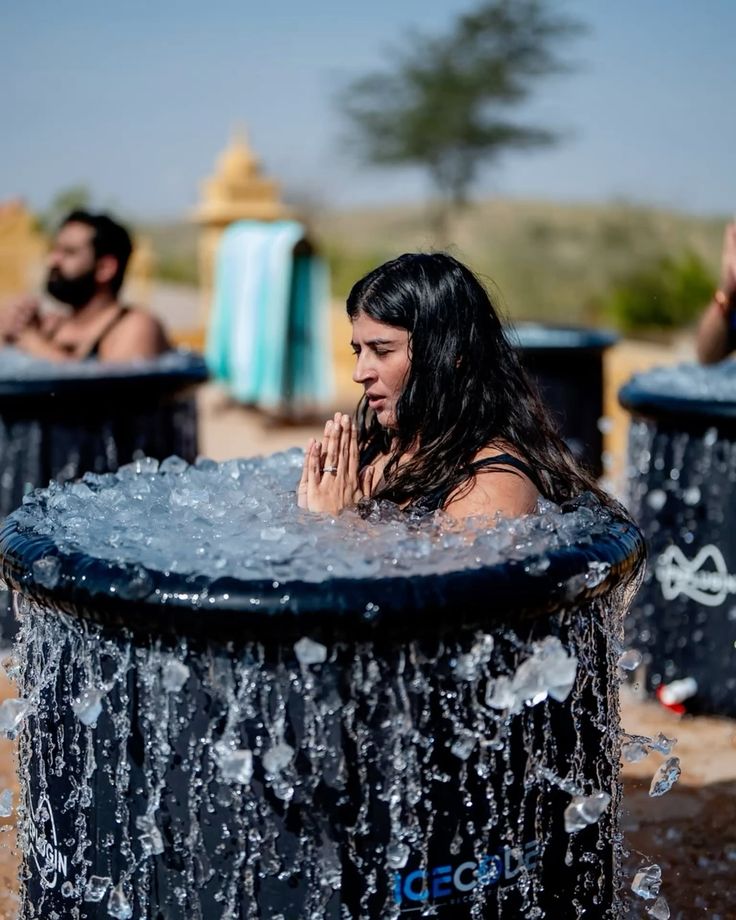
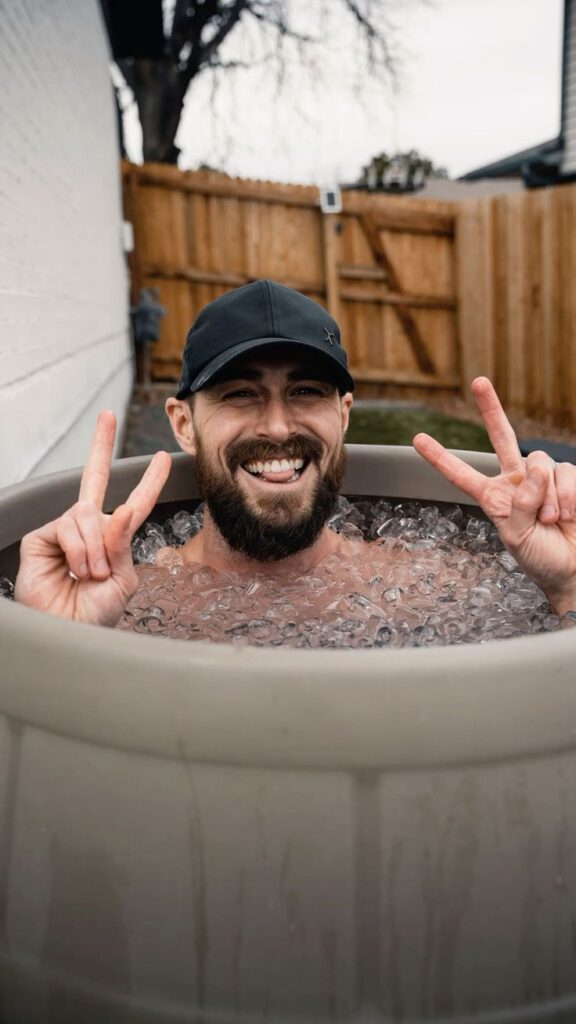
Part 2: The Hot Corner – Saunas (Heat Therapy)
Saunas, including traditional (dry heat) and infrared varieties, use heat to elevate the body’s core temperature. Sessions are typically 10-30 minutes, with temperatures often ranging from 70∘C to 100∘C (158∘F to 212∘F) in traditional saunas.
How Saunas Aid Recovery
- Improved Circulation (Vasodilation): Heat causes blood vessels to widen (vasodilation), dramatically increasing blood flow to muscles and joints. This increased circulation delivers more oxygen, nutrients, and hormones (like growth hormone) to aid in tissue repair.
- Muscle Relaxation and Flexibility: The warmth helps to relax tense muscles, ease joint stiffness, and reduce overall muscle tension, which can be highly beneficial for post-workout tightness.
- Heat Shock Proteins (HSPs): Heat stress triggers the production of HSPs, which are protective proteins that help repair damaged cellular components and may play a role in maintaining muscle mass and function during periods of stress.


Key Benefits for Muscle Soreness
- Superior Relaxation: Provides a sense of mental and physical relaxation, helping to lower stress hormones like cortisol.
- Relief from Stiffness: Excellent for later-stage recovery to loosen up stiff muscles and improve flexibility.
- Endurance Support: Some studies on distance runners suggest post-exercise sauna bathing can improve performance in subsequent endurance workouts.
Potential Drawbacks
- Dehydration Risk: Excessive sweating requires diligent hydration to avoid light-headedness or fatigue.
- Not for Acute Injuries: Heat should be avoided in the first 48-72 hours of an acute injury or severe inflammation as it can potentially worsen swelling.
Part 3: The Verdict – Which is Better?
No single recovery method is universally superior; the best choice depends on your specific goals and the type of workout you completed.
| Factor | Ice Bath (Cold Therapy) | Sauna (Heat Therapy) |
| Primary Mechanism | Vasoconstriction, reduced metabolic activity, numbing. | Vasodilation, increased circulation, muscle relaxation. |
| Best For | Reducing acute inflammation and immediate pain relief after high-intensity or contact sports. | Relaxation, relieving stiffness, and improving recovery after endurance workouts. |
| Effect on Soreness (DOMS) | Significantly reduces perceived muscle soreness. | Reduces muscle tension and overall stiffness. |
| Timing | Immediately post-exercise (within an hour). | A few hours post-exercise or on rest days. |
| Potential Drawback | May interfere with muscle growth if used constantly post-lifting. | Risk of dehydration and should be avoided with acute swelling. |

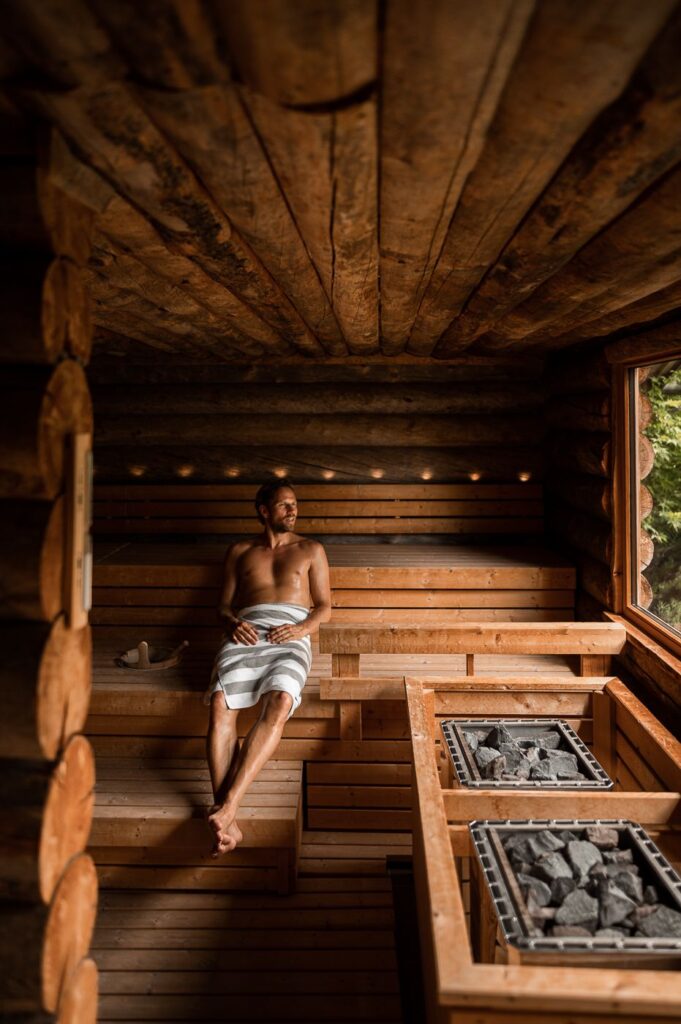
The Hybrid Approach: Contrast Therapy
For many, the most effective strategy is to combine both. Contrast Therapy involves alternating between hot and cold exposure (e.g., 10-15 minutes in the sauna followed by 2-3 minutes in an ice bath, repeated 2-3 times).
This method leverages the benefits of both: the cold dramatically constricts vessels, and the heat causes rapid dilation. This “pumping” action is believed to enhance circulation, flush waste products more efficiently, and optimize overall recovery by reducing both inflammation and muscle stiffness.
Conclusion
Ultimately, your choice between an ice bath and a sauna for muscle soreness should align with your recovery needs:
- Choose an Ice Bath if your priority is immediate pain relief and rapidly reducing inflammation after a grueling, high-impact, or high-volume workout.
- Choose a Sauna if your priority is muscle relaxation, stress reduction, and improving blood flow to loosen up stiff muscles, particularly after endurance training.
- Choose Contrast Therapy to gain the benefits of both, effectively maximizing circulation and reducing both inflammation and stiffness.
Always listen to your body, stay well-hydrated, and consult with a healthcare professional if you have any pre-existing medical conditions.

